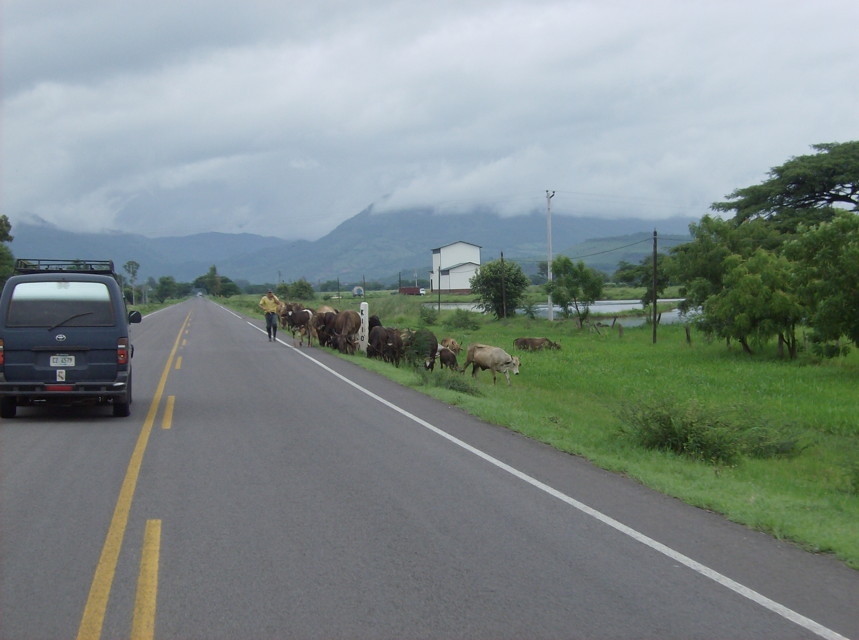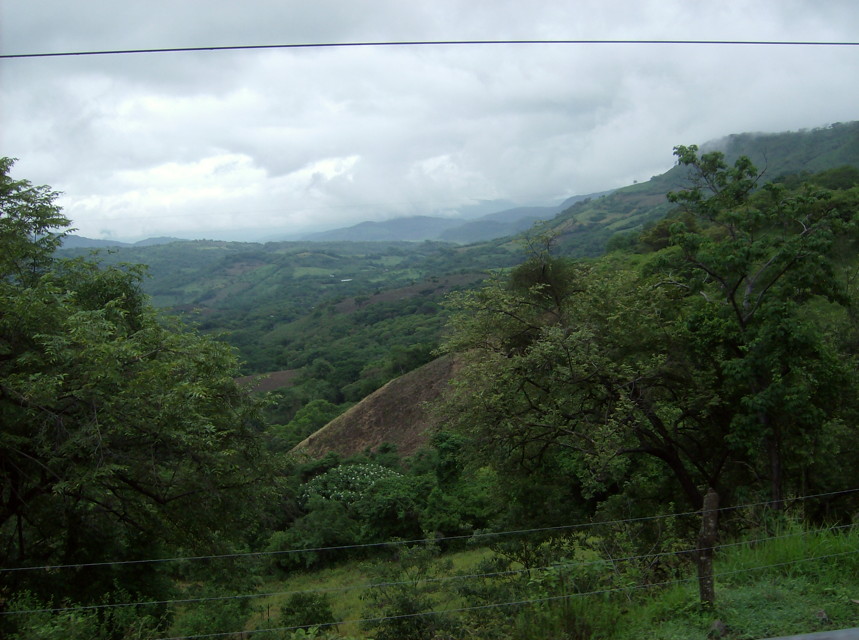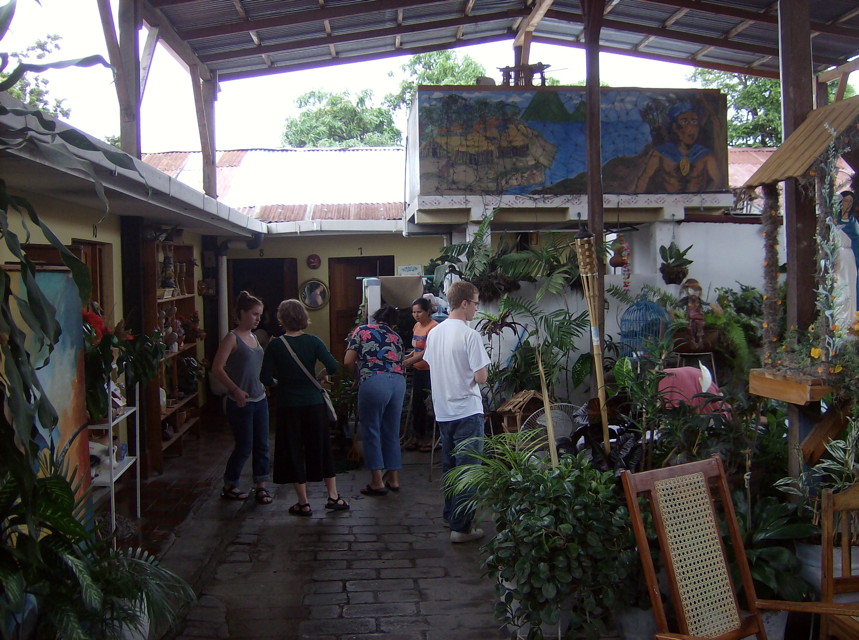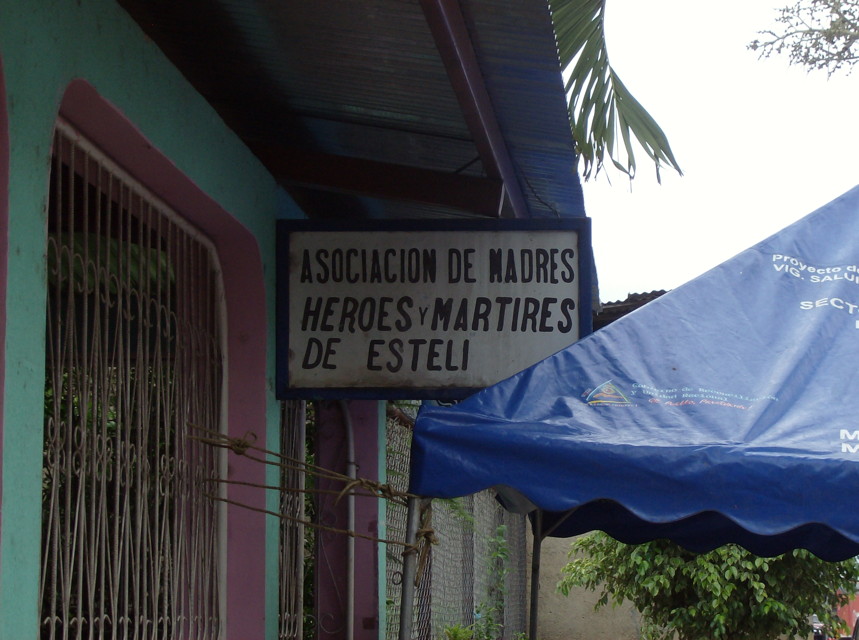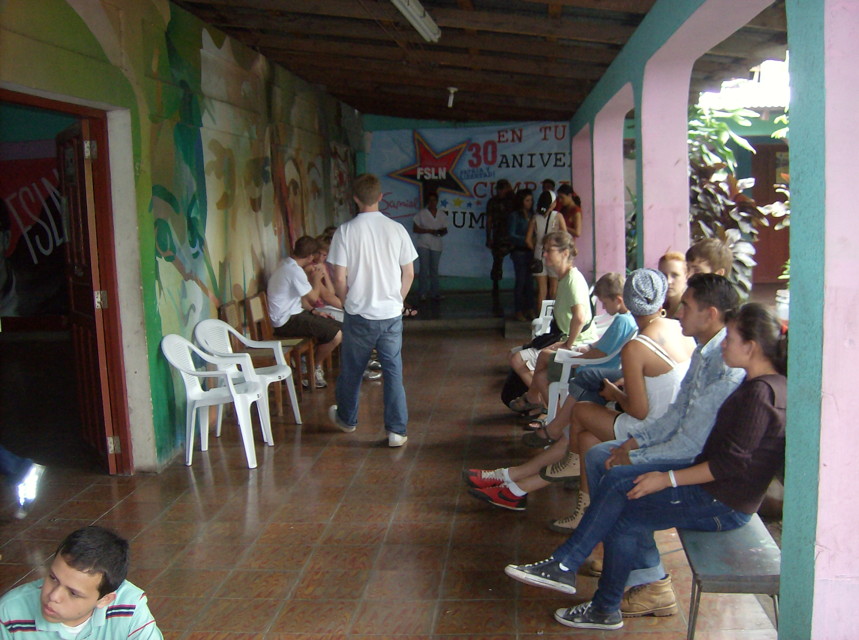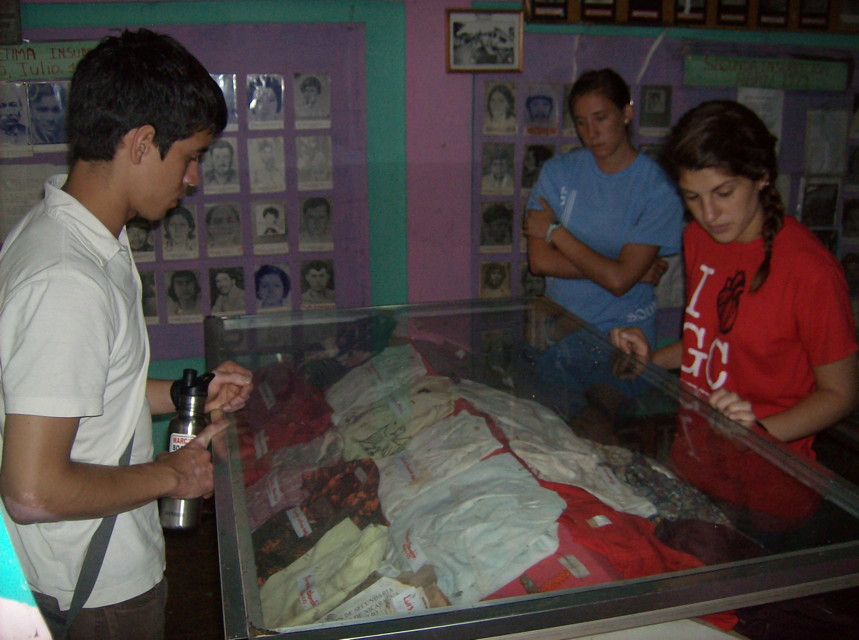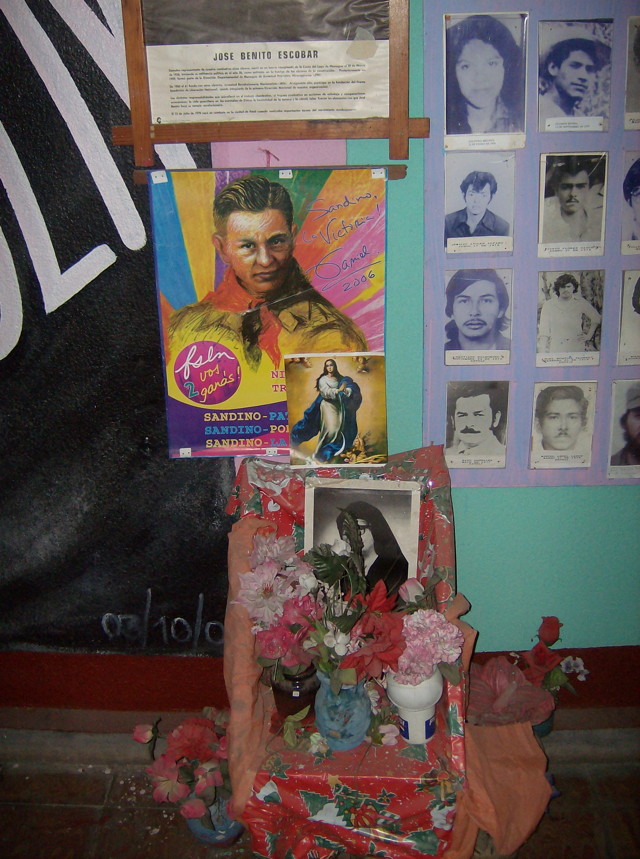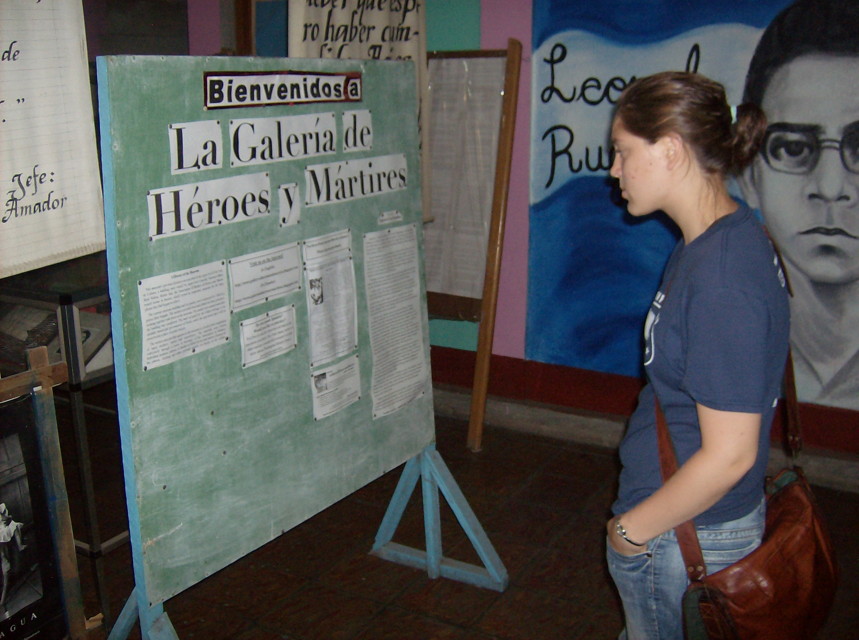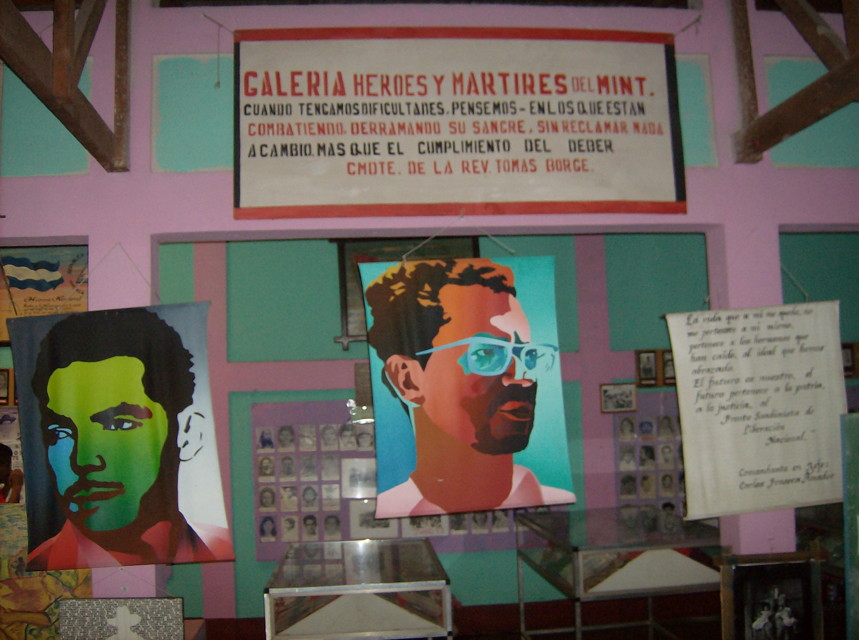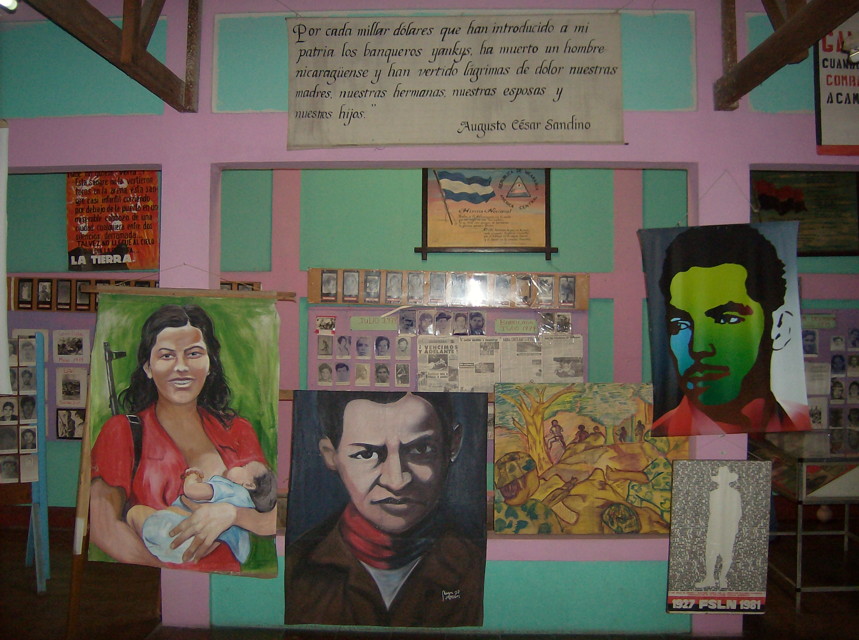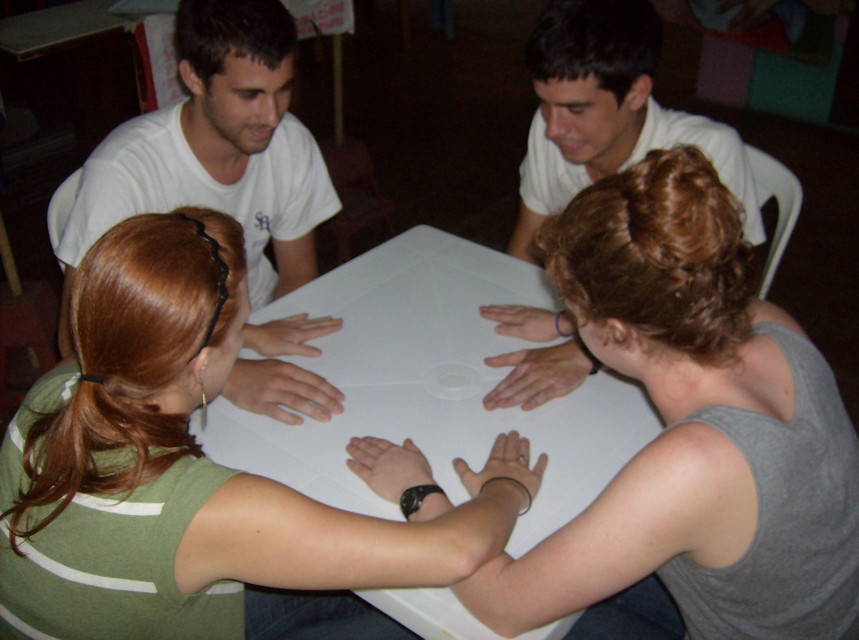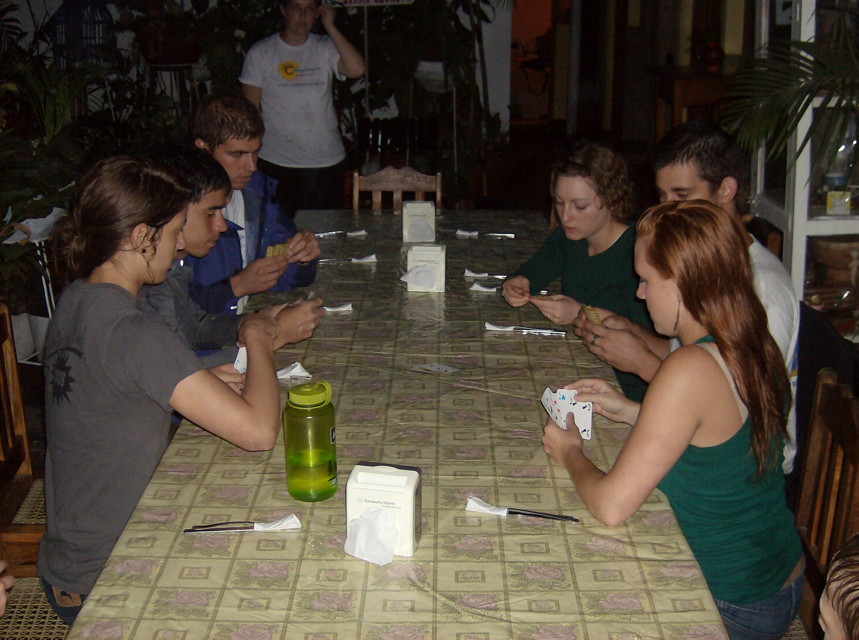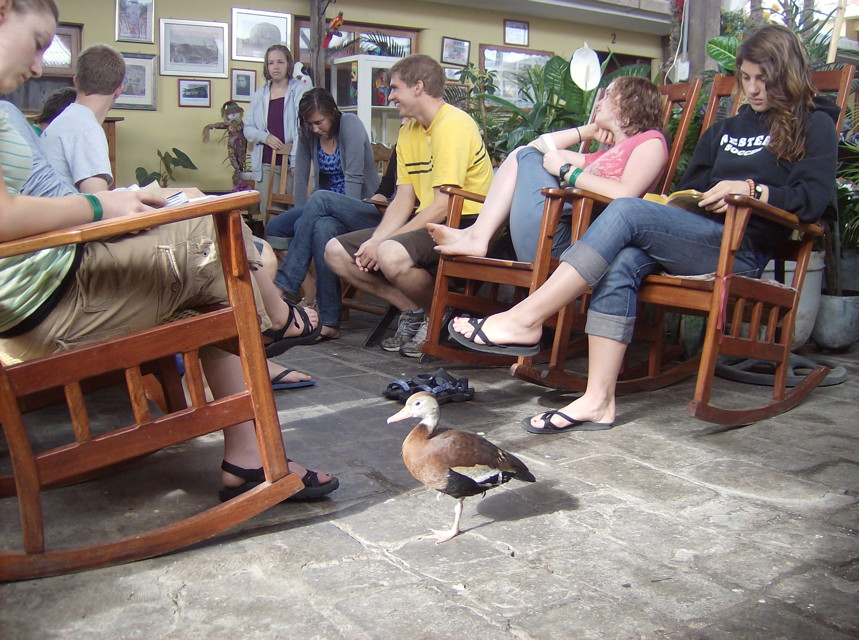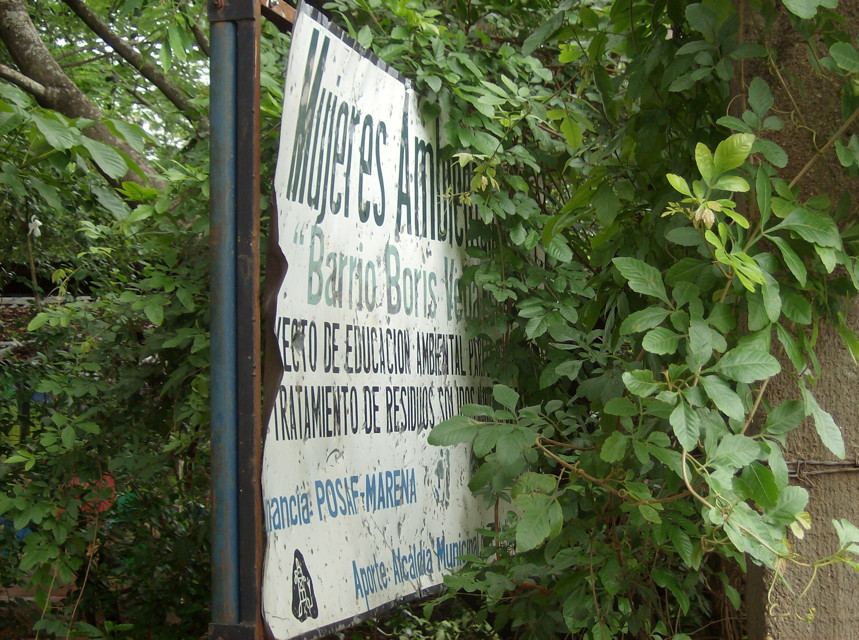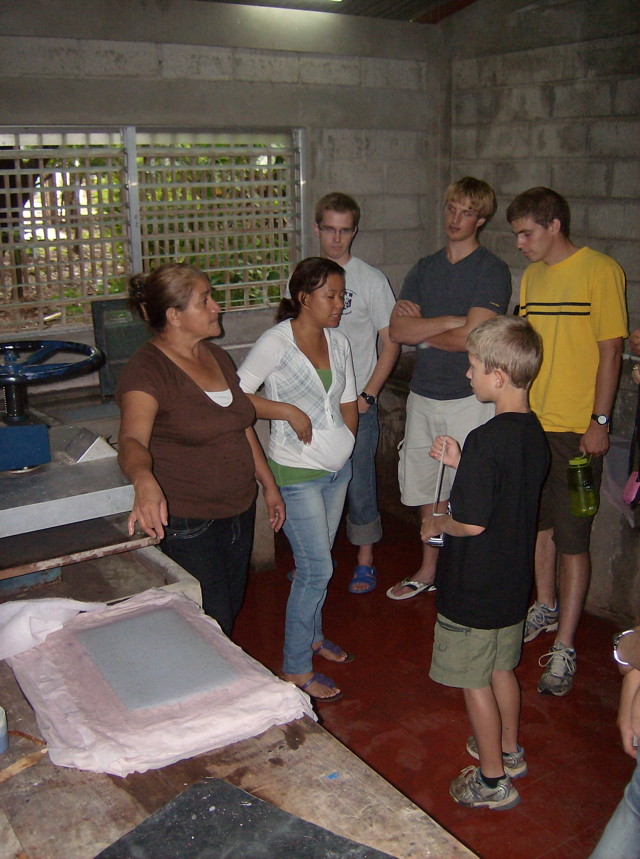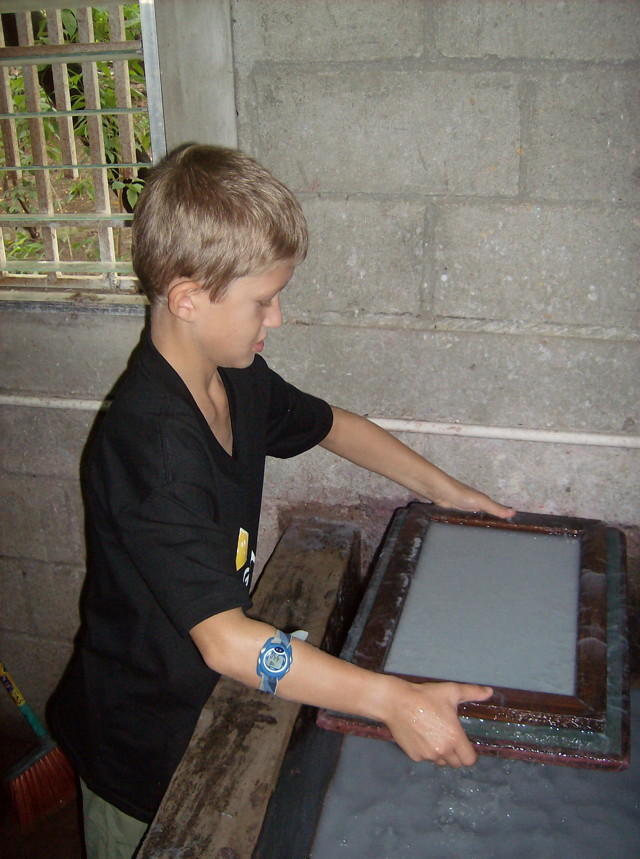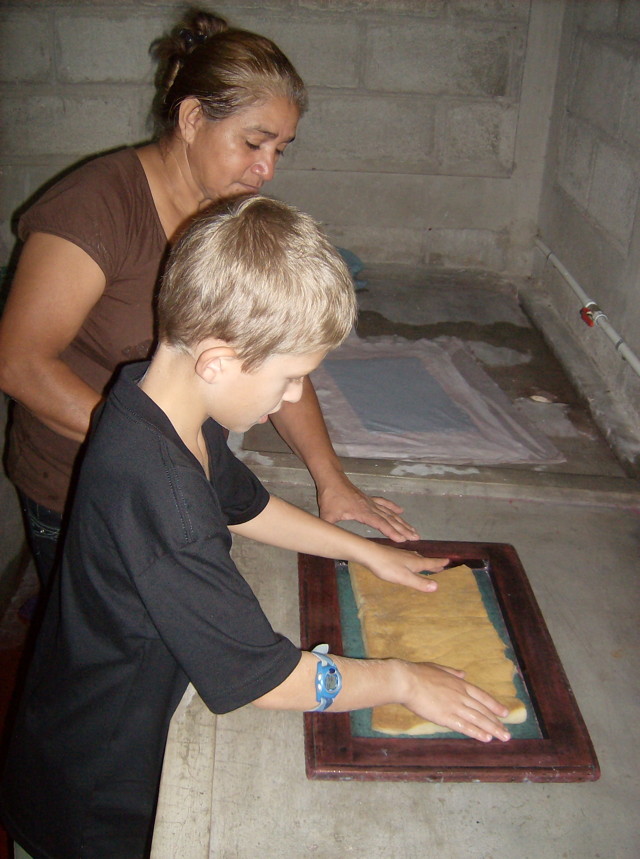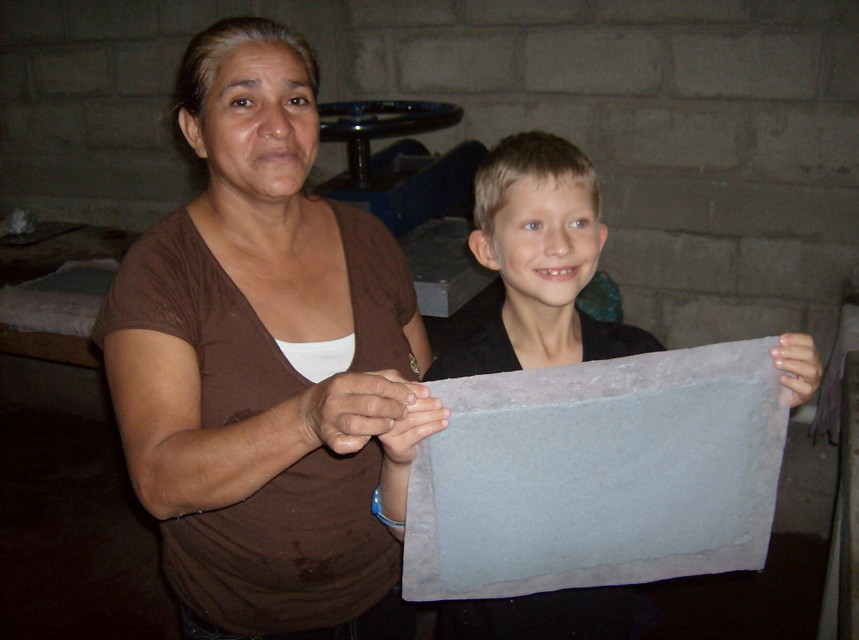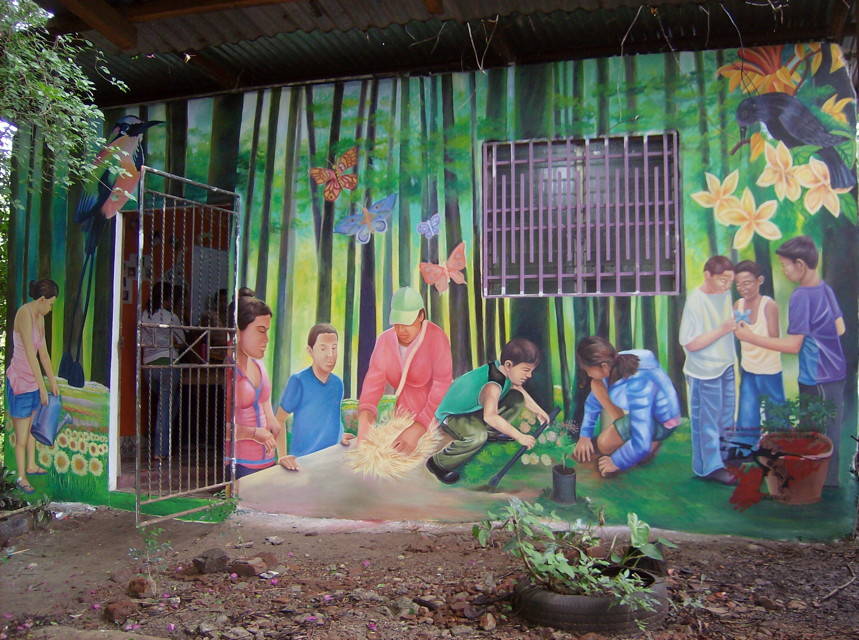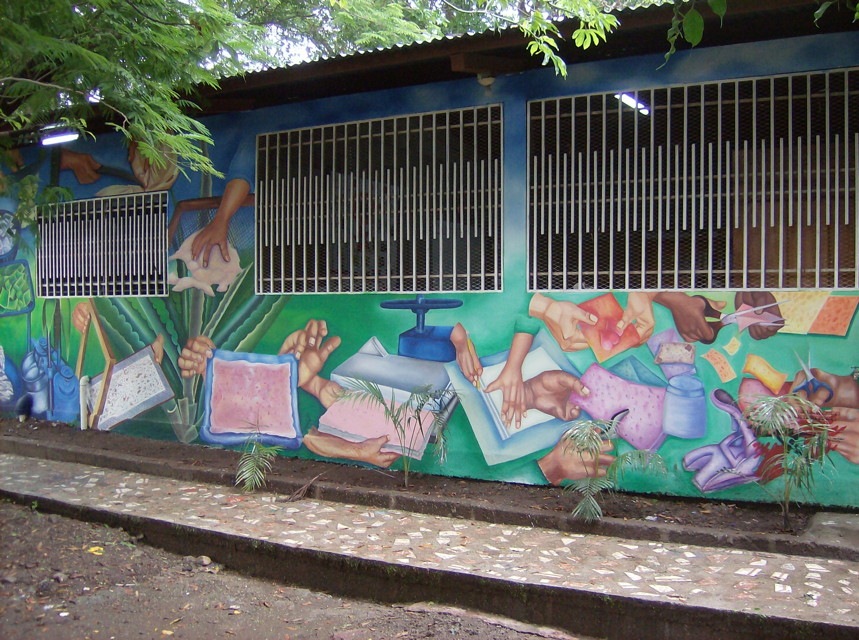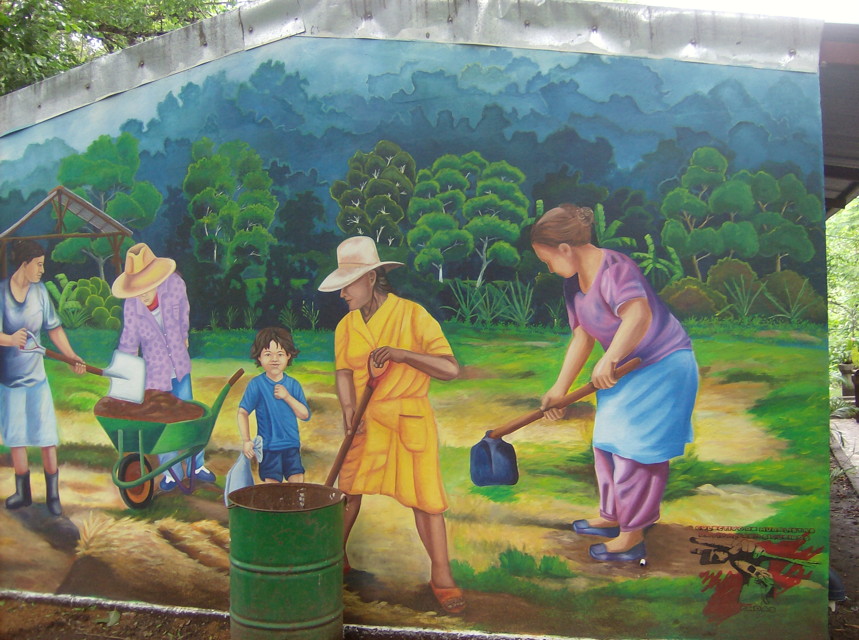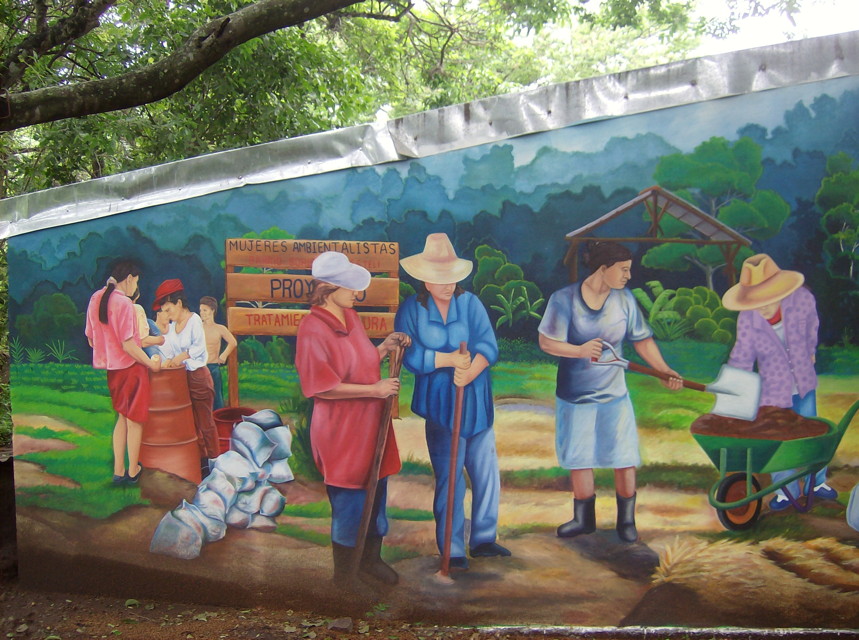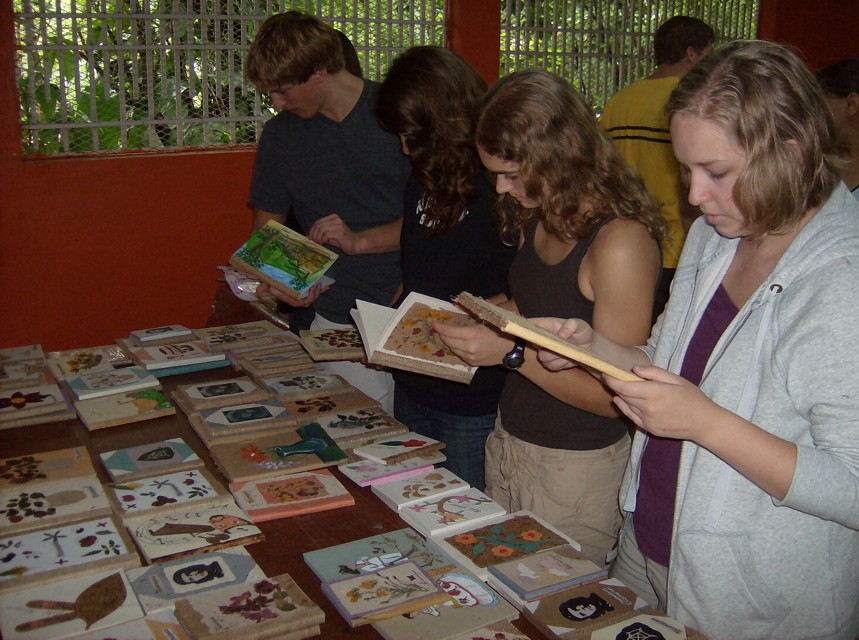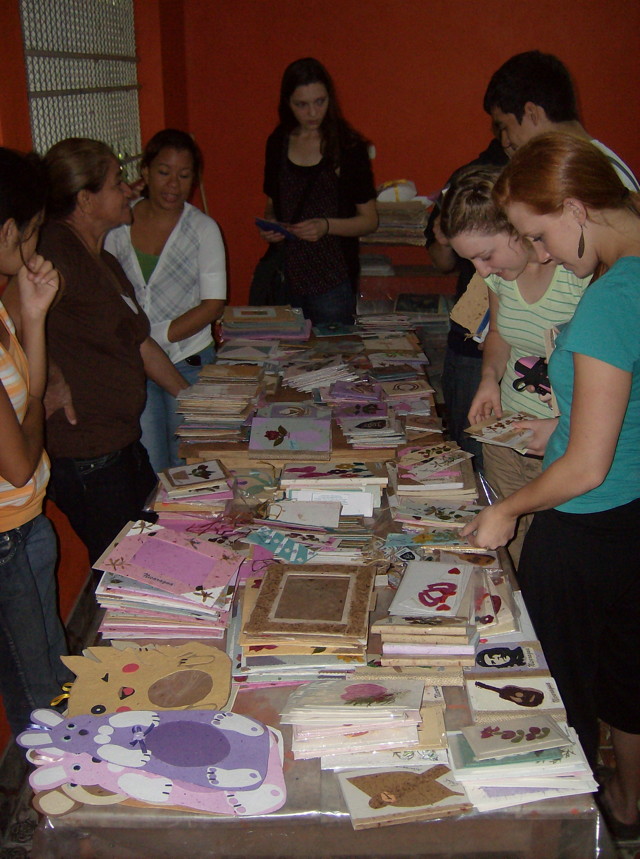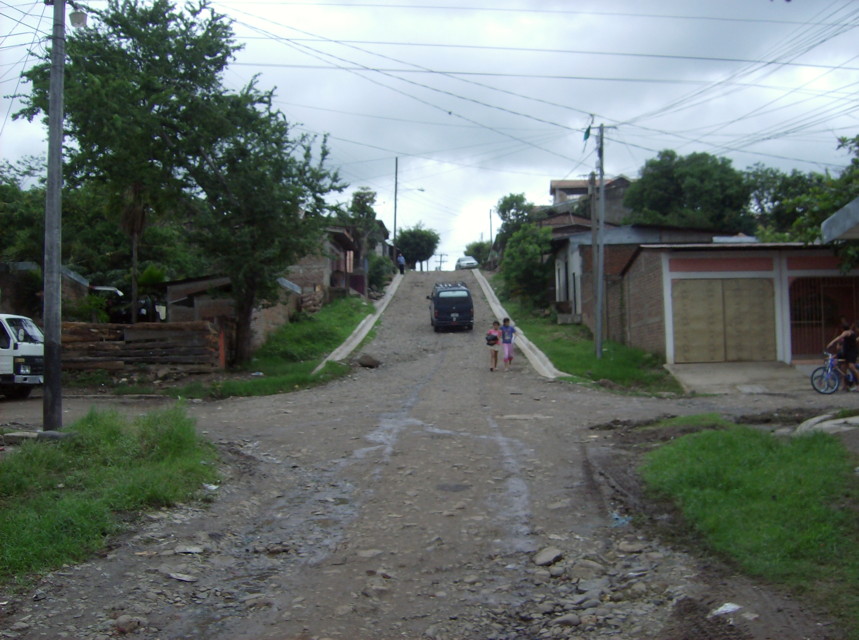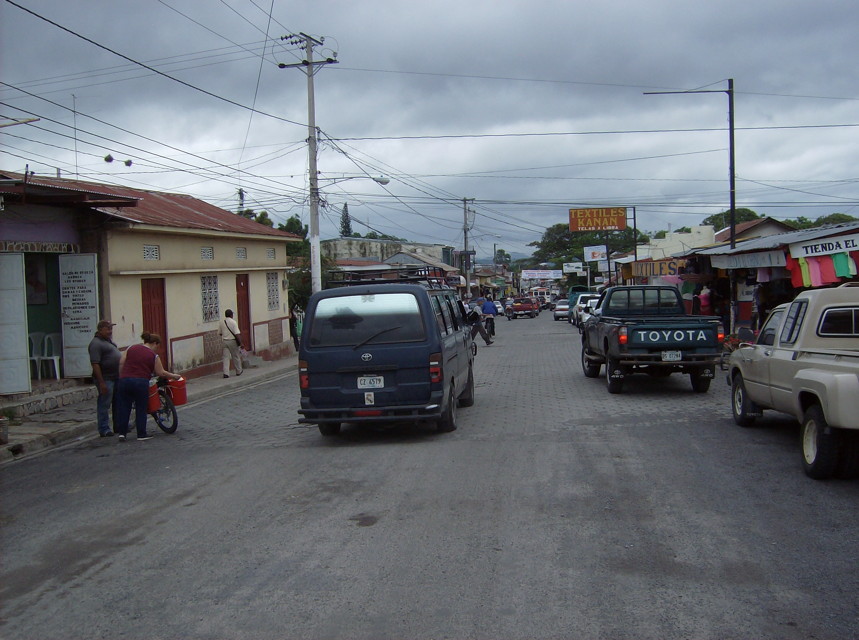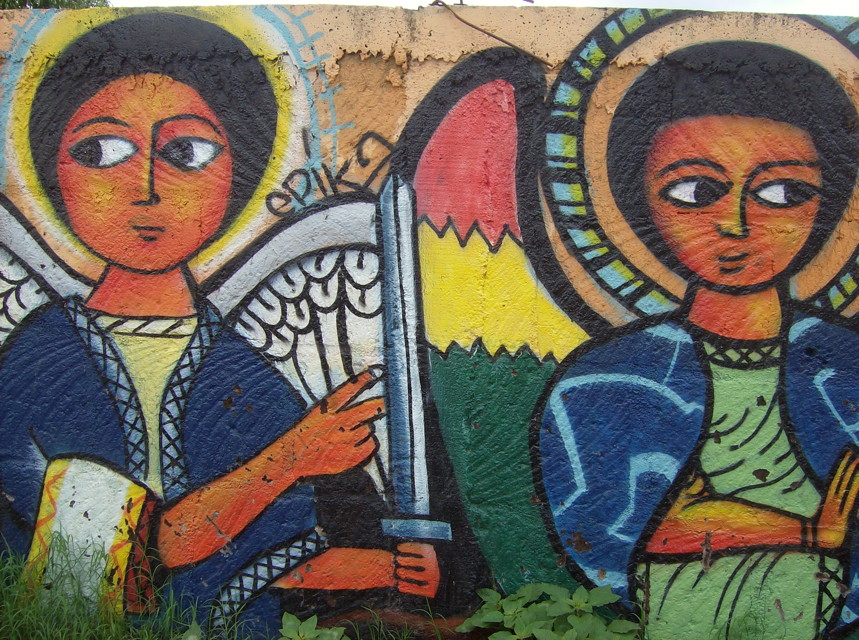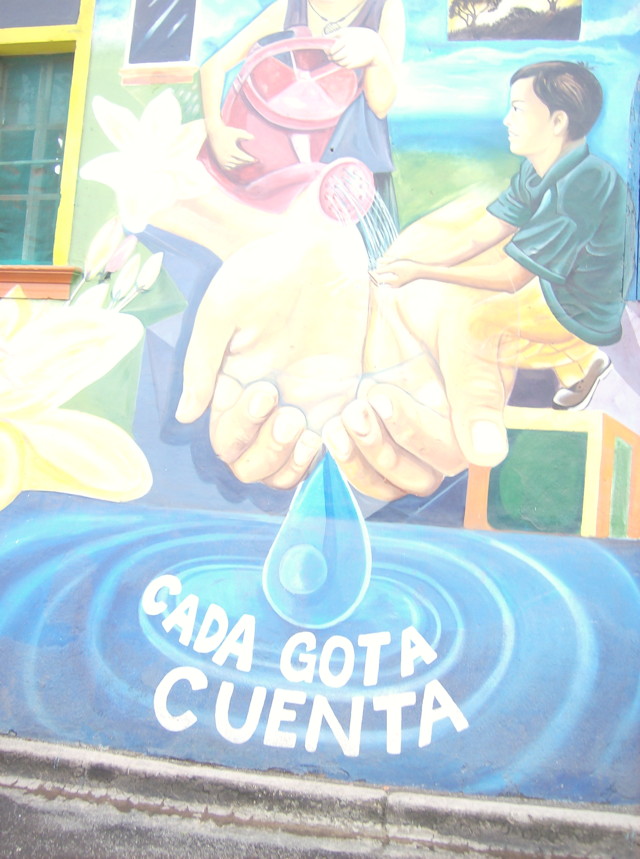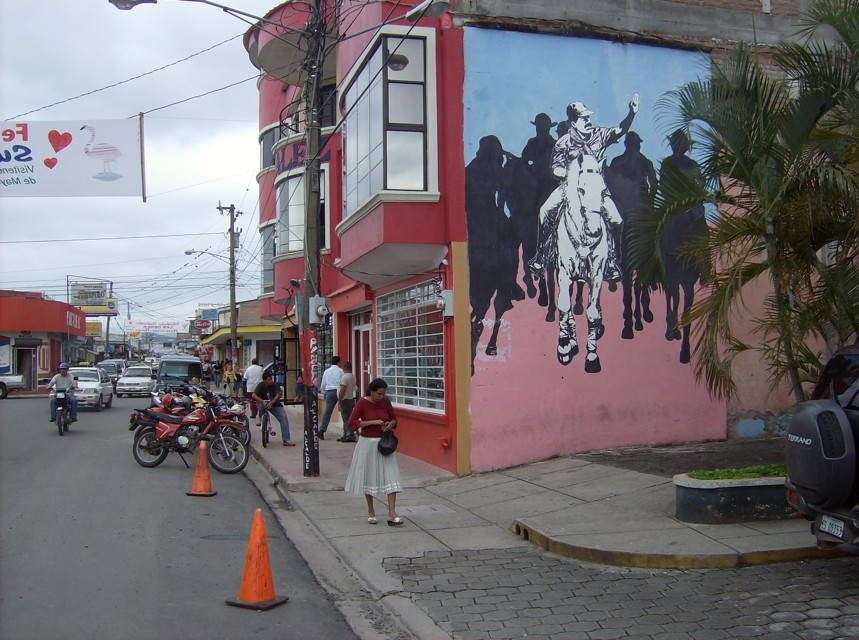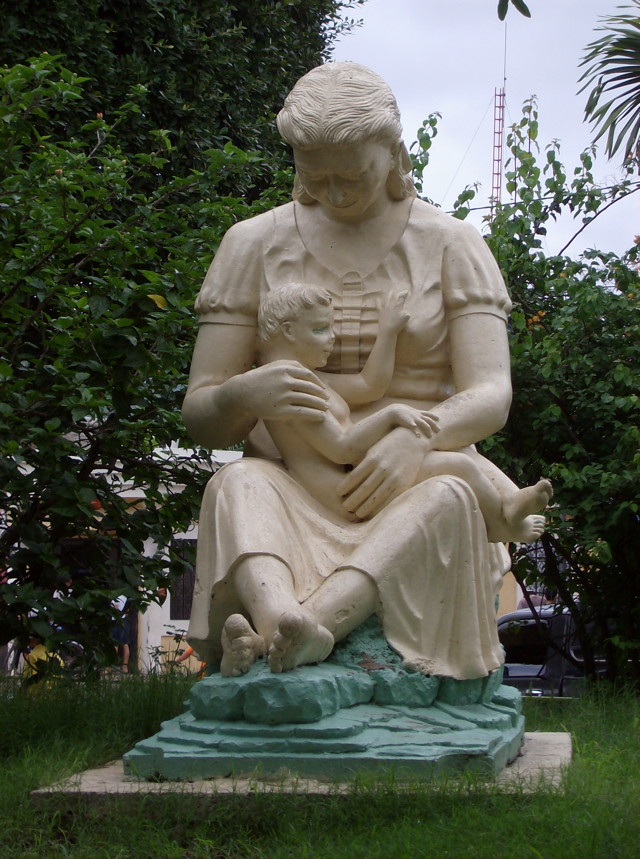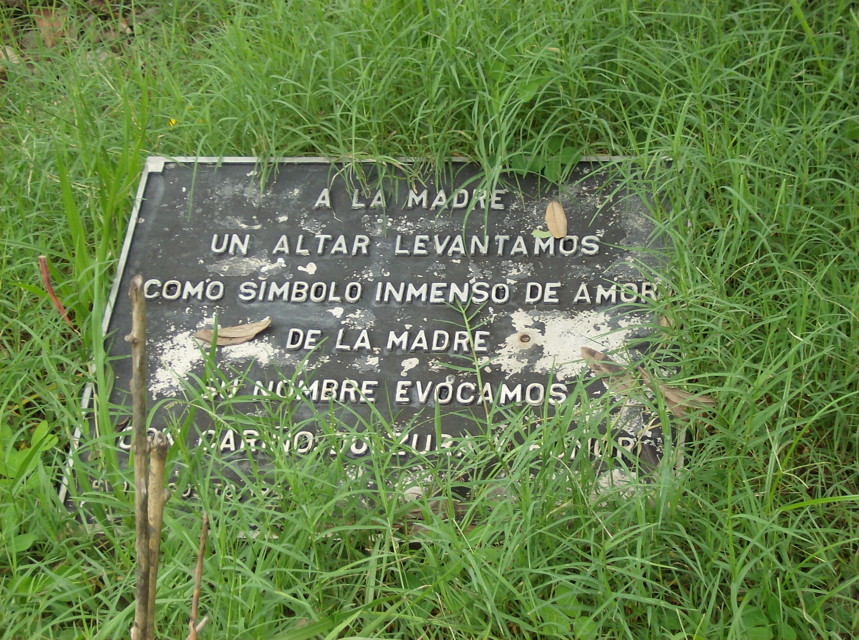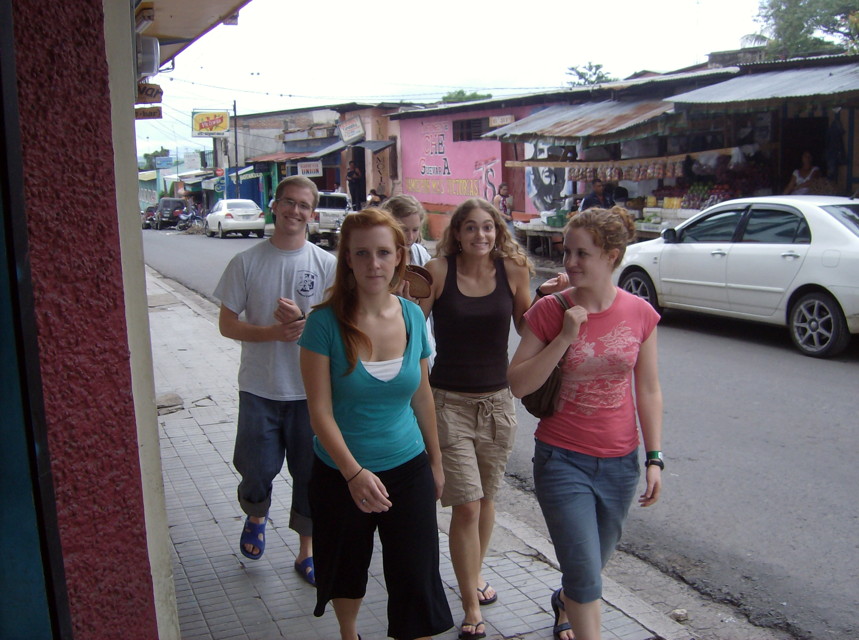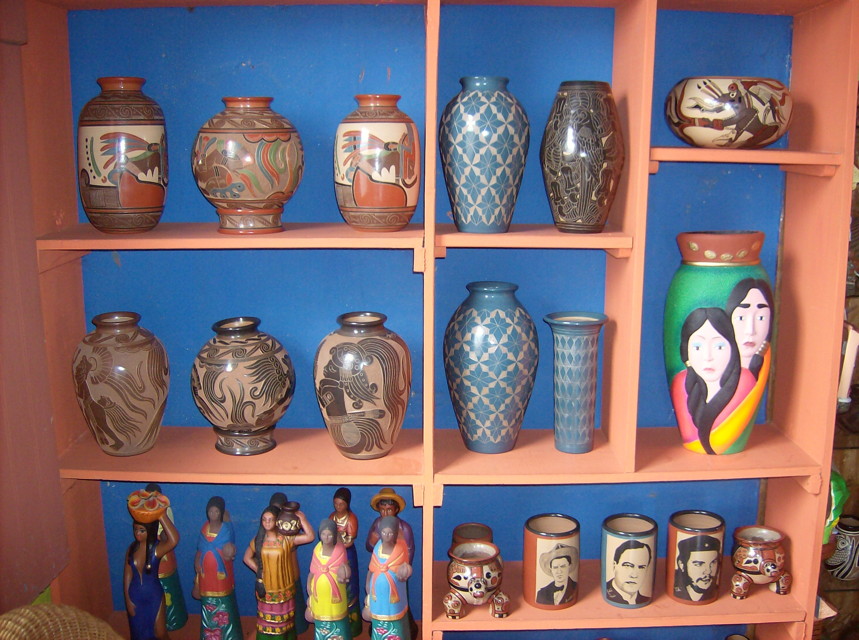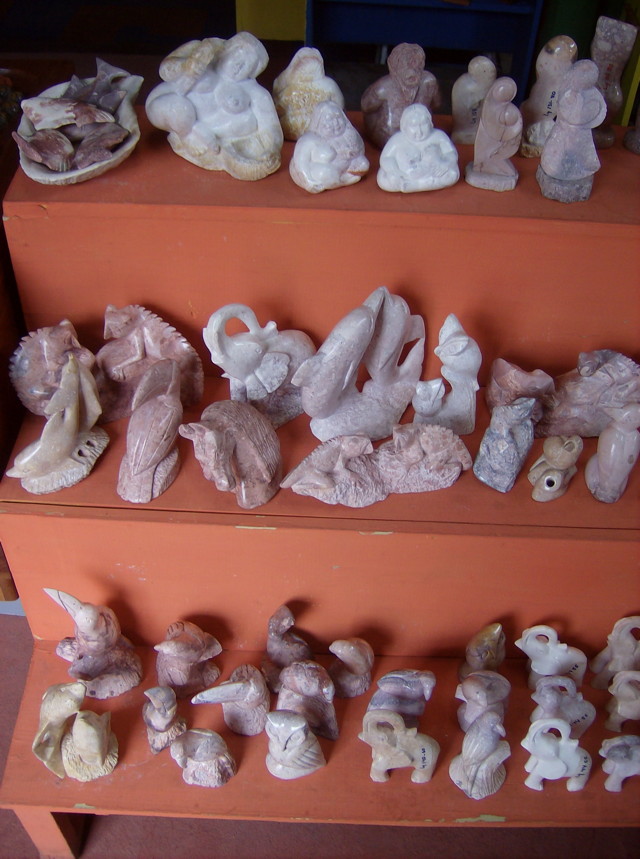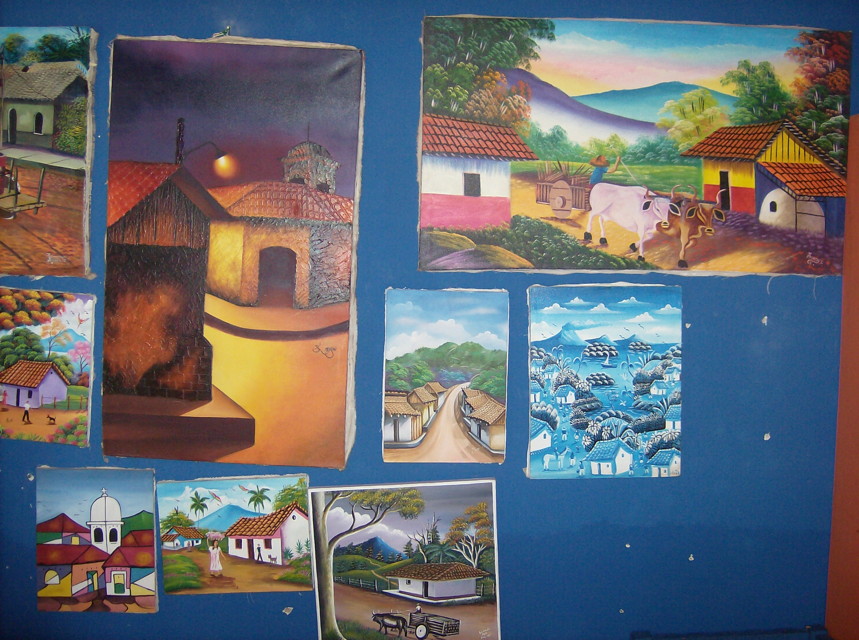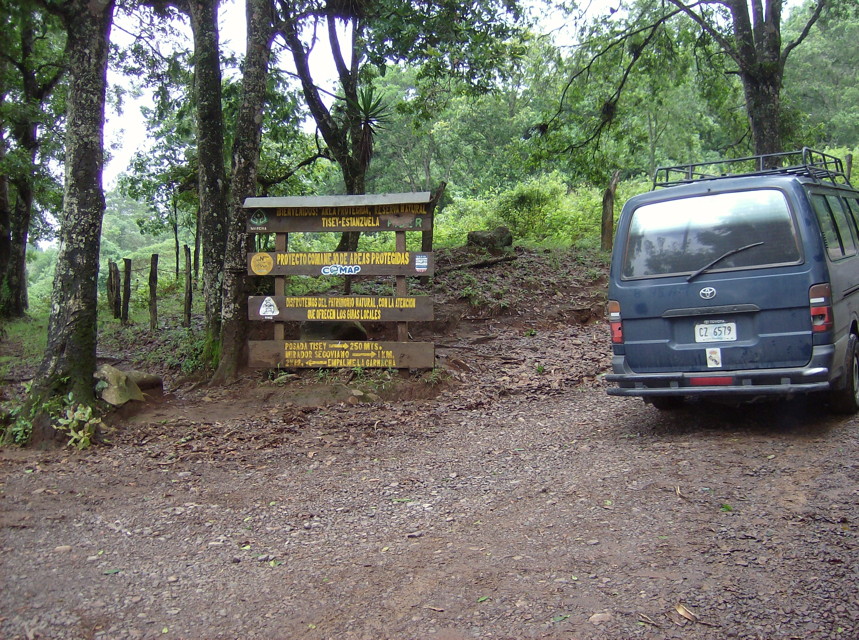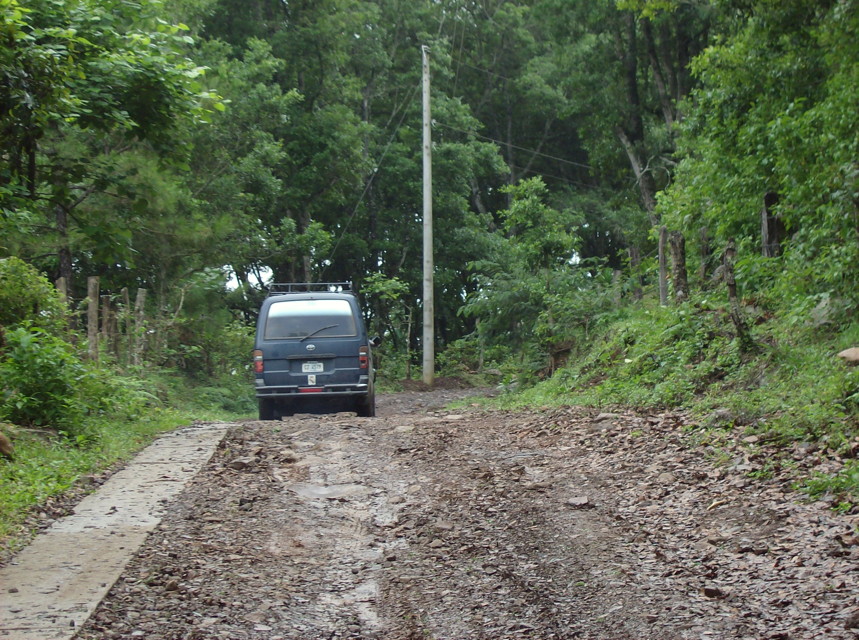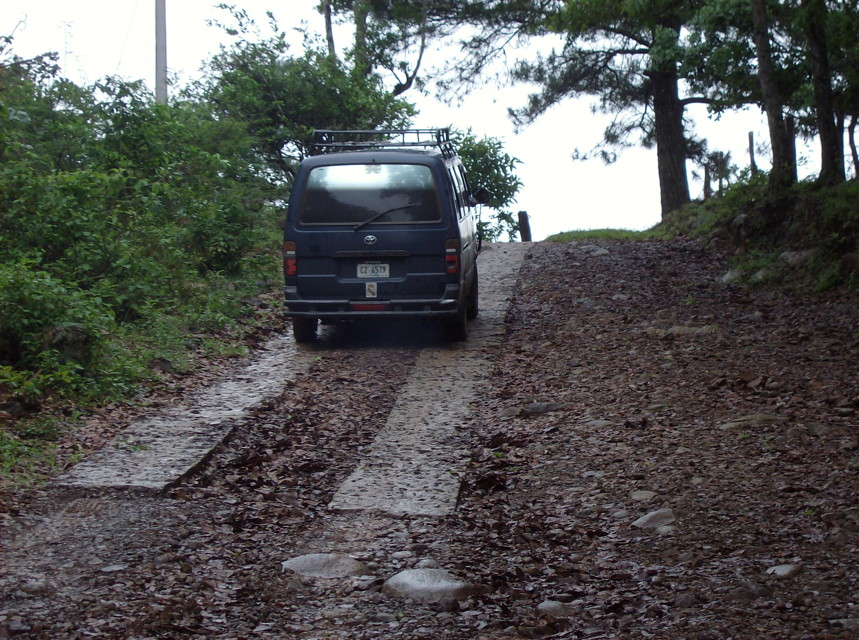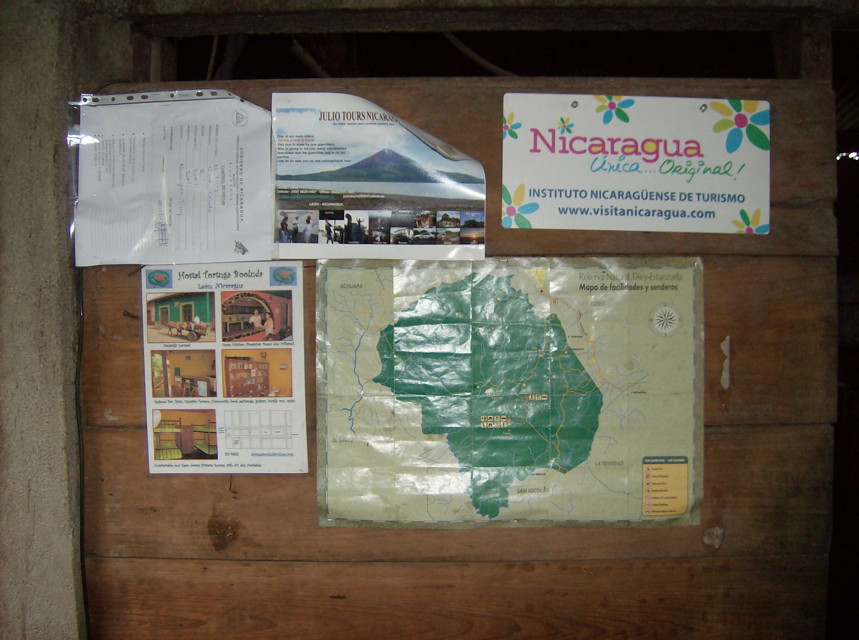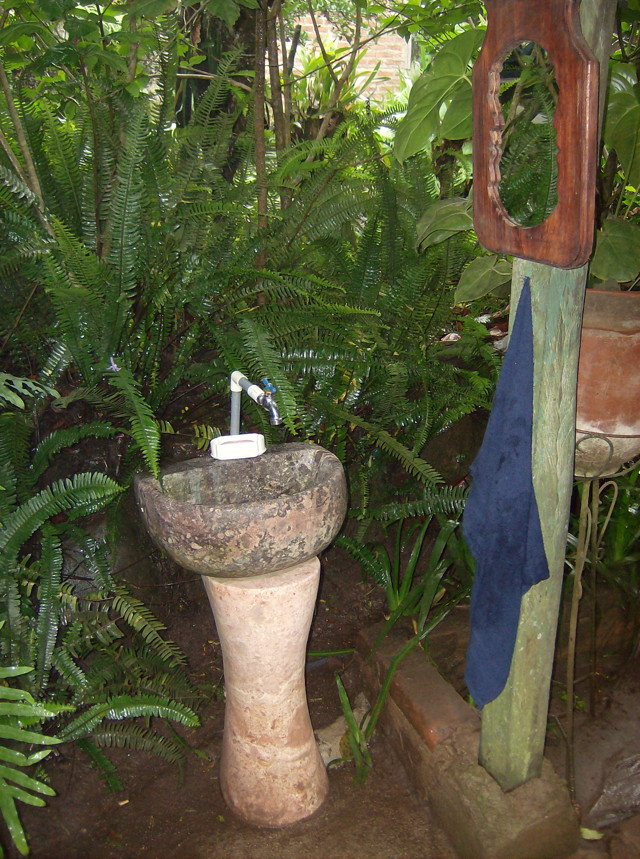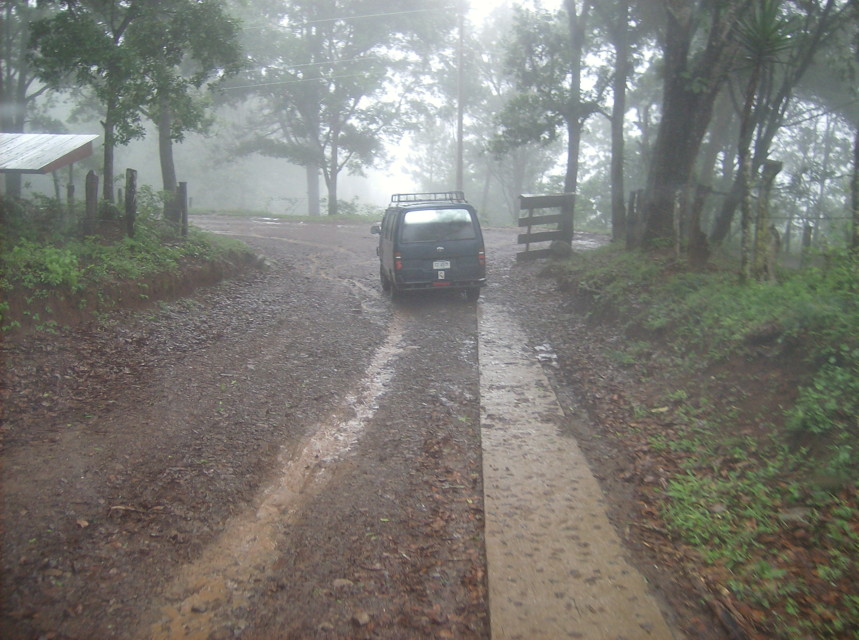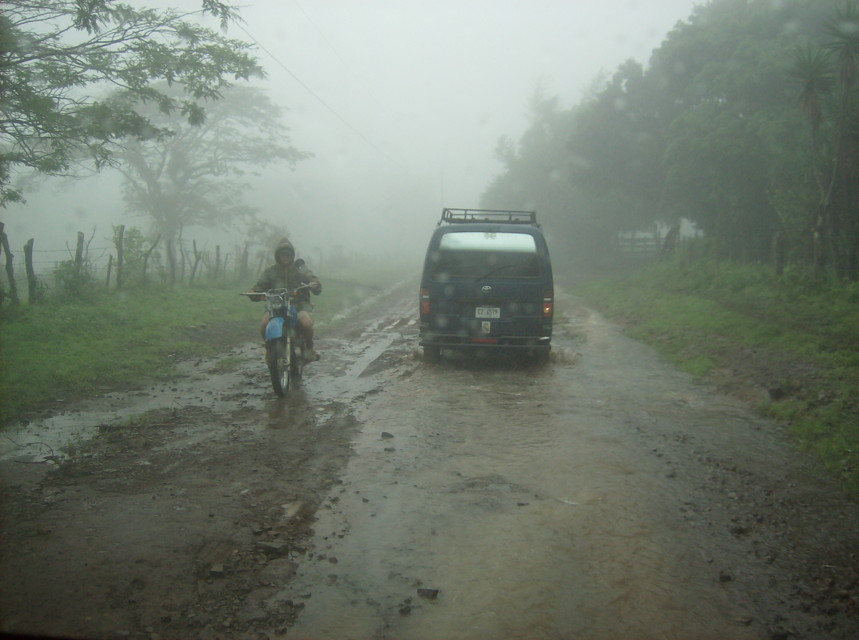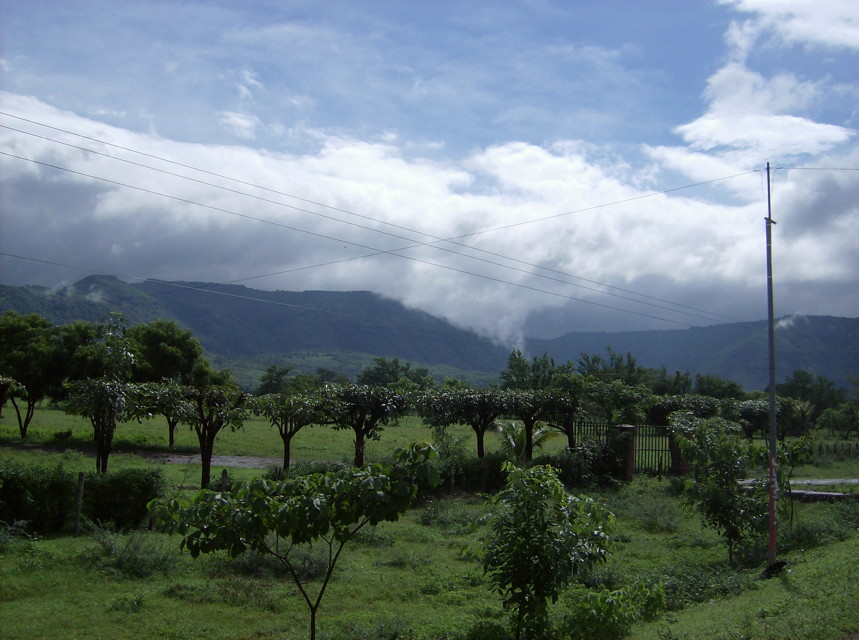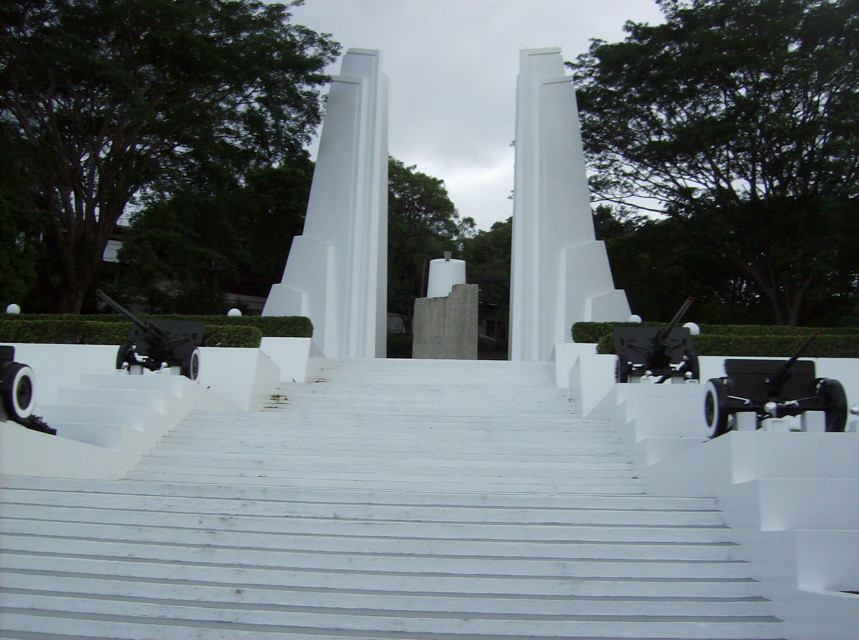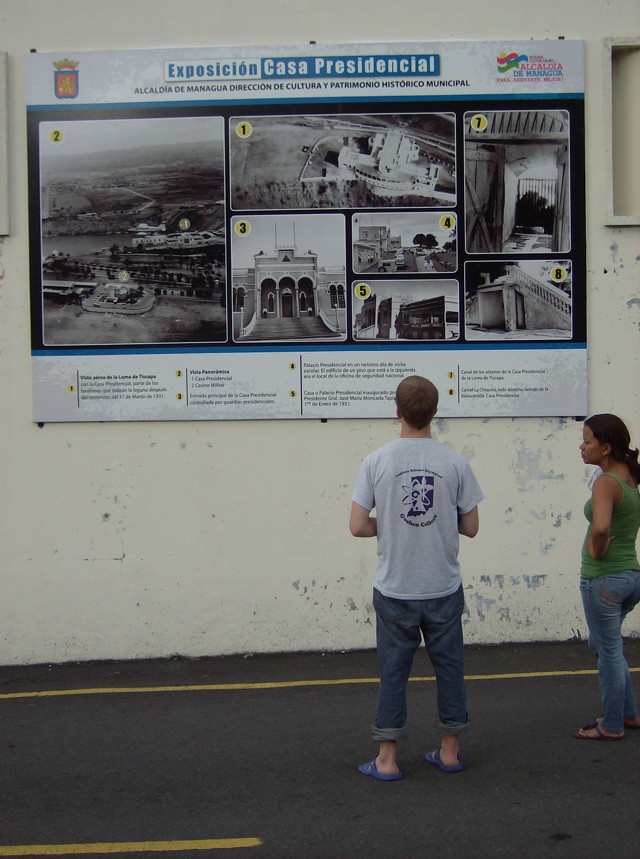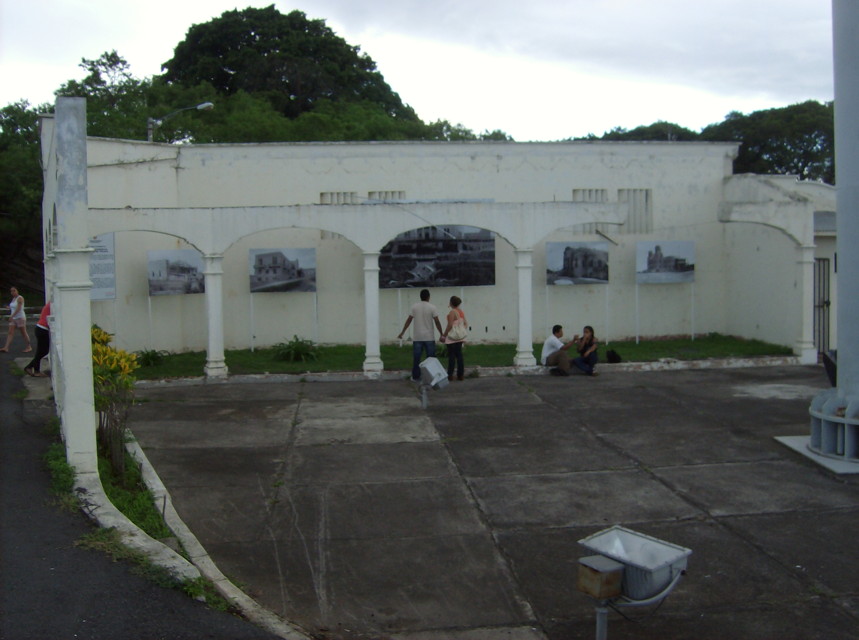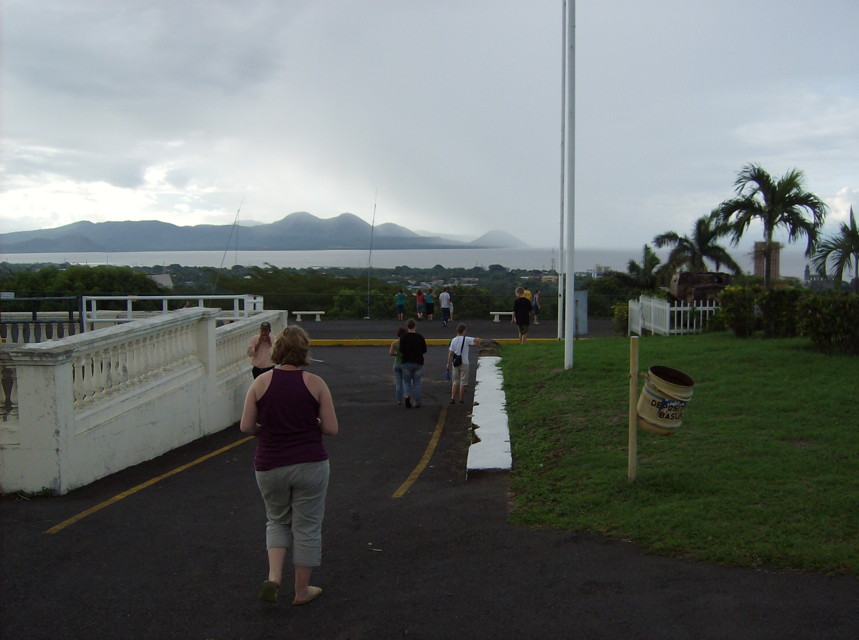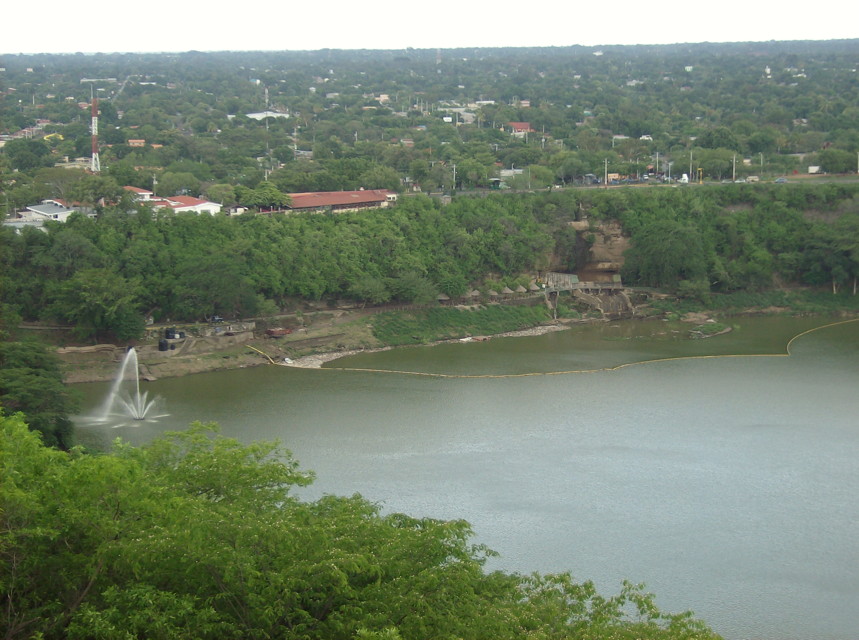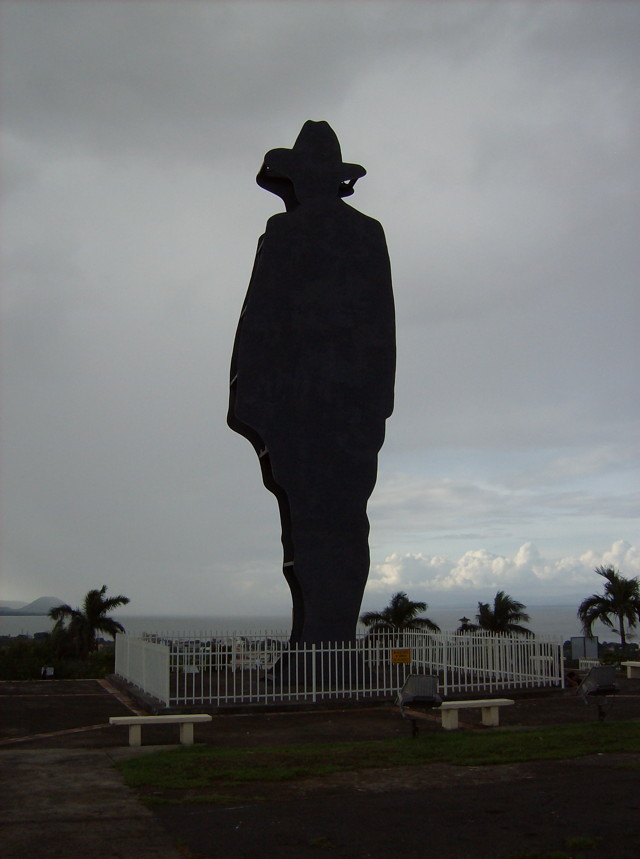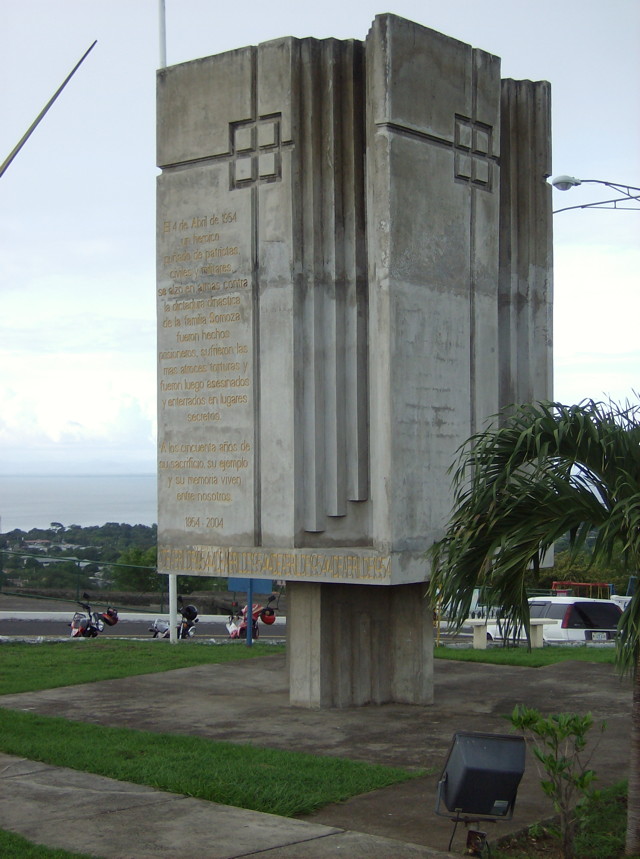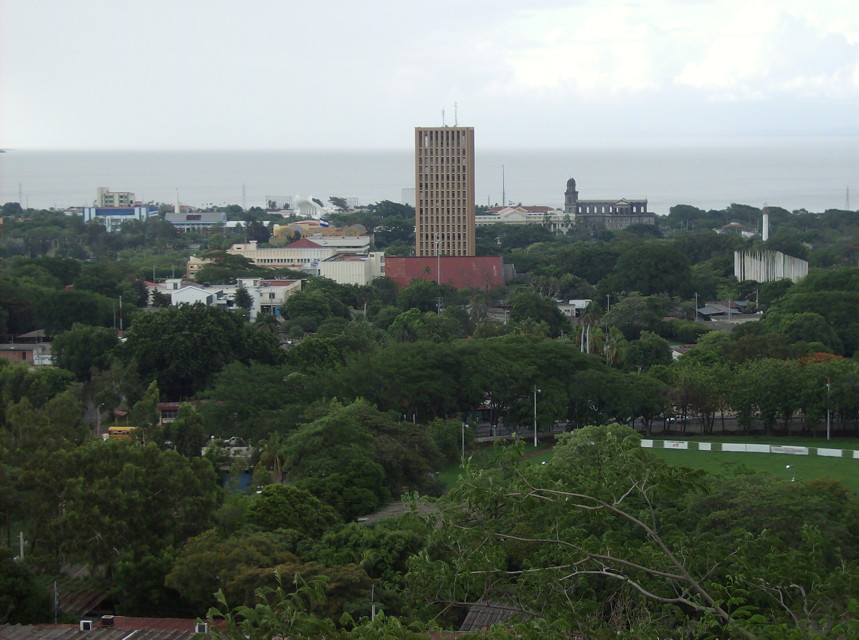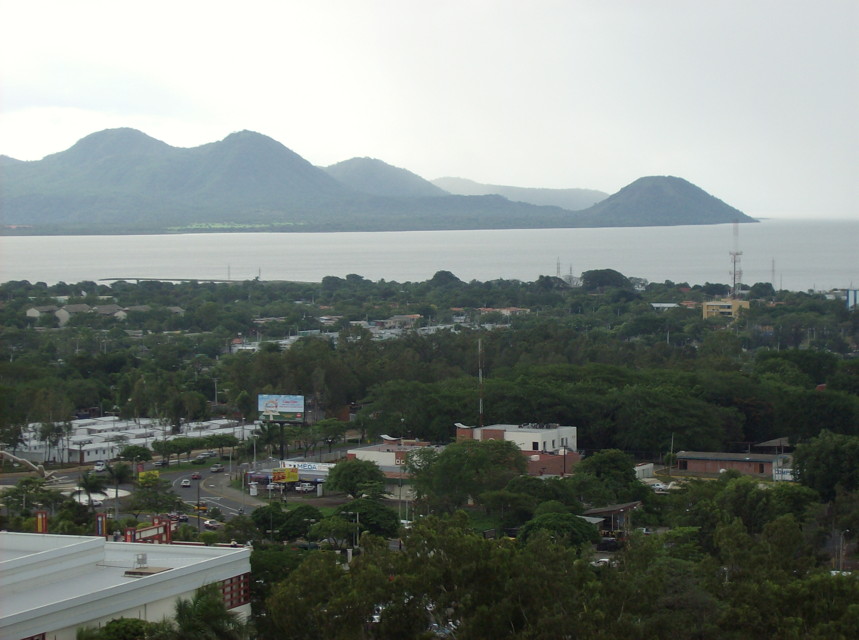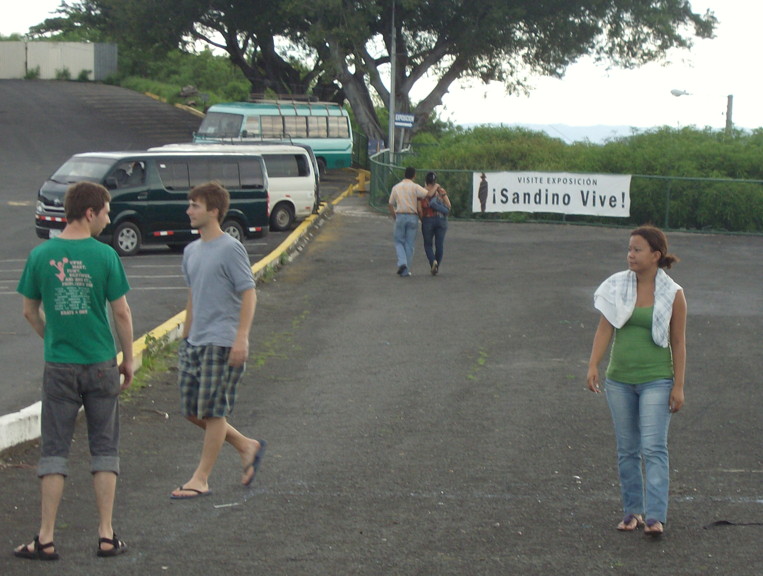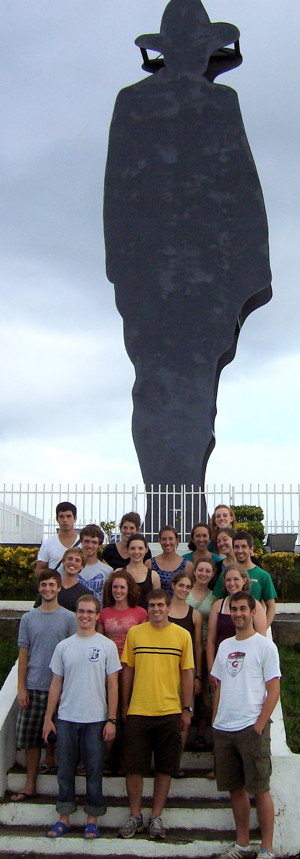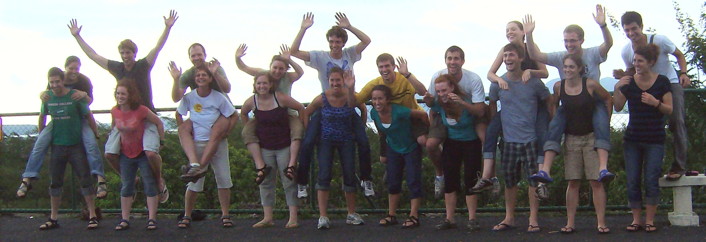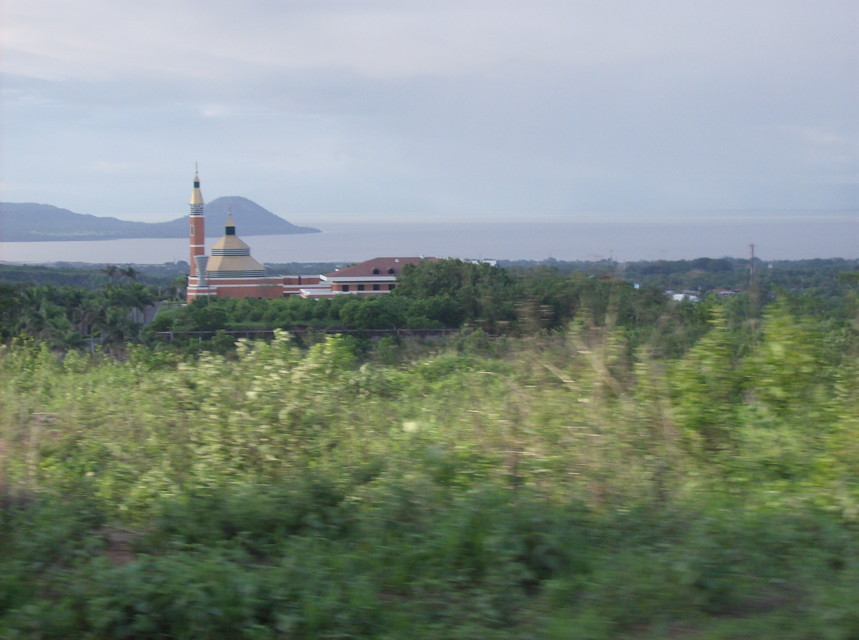Estelí: Conversations with Mothers and Veterans
Although Tropical Storm Agatha had us wondering on Wednesday, May 26, if traveling 4 hours by bus into the northern mountains was going to be a good idea, the rainfall lightened significantly on Thursday, and we took off as planned on Friday morning (May 28). Estelí City is located in the Department of Estelí, in the Mesetas de Estelí. The primary purposes of this two-day field trip were to 1) visit the Museum of Heroes and Martyrs (of the revolution and the Contra War) and hear first person accounts of those decades of fighting and their lingering effects; 2) explore a new city — Estelí’s population is around 110,000 — quite a bit larger than Jinotepe’s 40,000; and 3) experience the northern mountains. Points 1 & 2 were accomplished despite the rain, and included an unexpected bonus while visiting the paper-making cooperative! Although we managed to enjoy a delicious lunch in the mountains, thoughts of hiking were squelched by the rain. We took advantage of our slightly early return to add a side trip to La Laguna de Tiscapa in Managua, an historical site where Somoza’s presidential palace once stood along with a prison where political prisoners were tortured, and where a larger-than-life silhouette of Sandino now graces Managua’s skyline.
The following journal entry by Jacob (used with his permission) provides a glimpse of the power of the first-person stories that we were privileged to bear witness to in Estelí.
The lecture at Estelí struck me profoundly. The women who spoke of war had suffered unimaginable hardship and loss. Varied eyes stared out from fuzzy pictures that lined the walls surrounding us — frozen images of children, martyrs as their mothers titled them, lost in the Nicaragua revolution now thirty years past. Not for the first time I wondered how similar it would feel to talk to a survivor of the American Revolution.
This was very real, very lived, very felt history.
The first woman’s account was most powerful. She told the tale of how she learned how her son had died. After begging a Sandinista commander to tell her the truth, he told her that the National Guard had decapitated him and used his head as a ball in retaliation for him killing a Sandinista commander in battle. As she told this, her voice broke and her eyes glinted with grief. Her pain, fresh after all these years, washed over me. And when she said that God must forgive revenge from someone who has been hurt so badly, I could not find it in myself to disagree. While my general ideology of pacifism is at odds with her decision to pick up a gun and fight, such situations require more understanding than judgment. Who are we to judge her anyways?
When faced with an enemy (and truly, I do not hesitate to use that word) willing, as she saw with her own eyes, to torture, rape, and kill an entire family, leaving their home an ashen graveyard, simply for giving food to their opponents, what hope does peaceful opposition have to stop them? How much less hope when that enemy is supported and funded by the most powerful and wealthy nation on the planet (U.S.)? I would like to believe that with God’s grace it is and has been possible. But I also cannot fault someone who thinks otherwise.
The ghosts of this past still live in the minds and hearts of Nicaraguans today. And currently battles of disappointments and disillusionment dominate the political landscape in ways that are frankly shocking even to a politically jaded U.S. American. How hard must it be to have hope here?
And how utterly necessary.
Thank God for mercies great and small, and may God forgive those who act with the best of intentions. Lives are short and faults abound. Yet may goodness endure.
